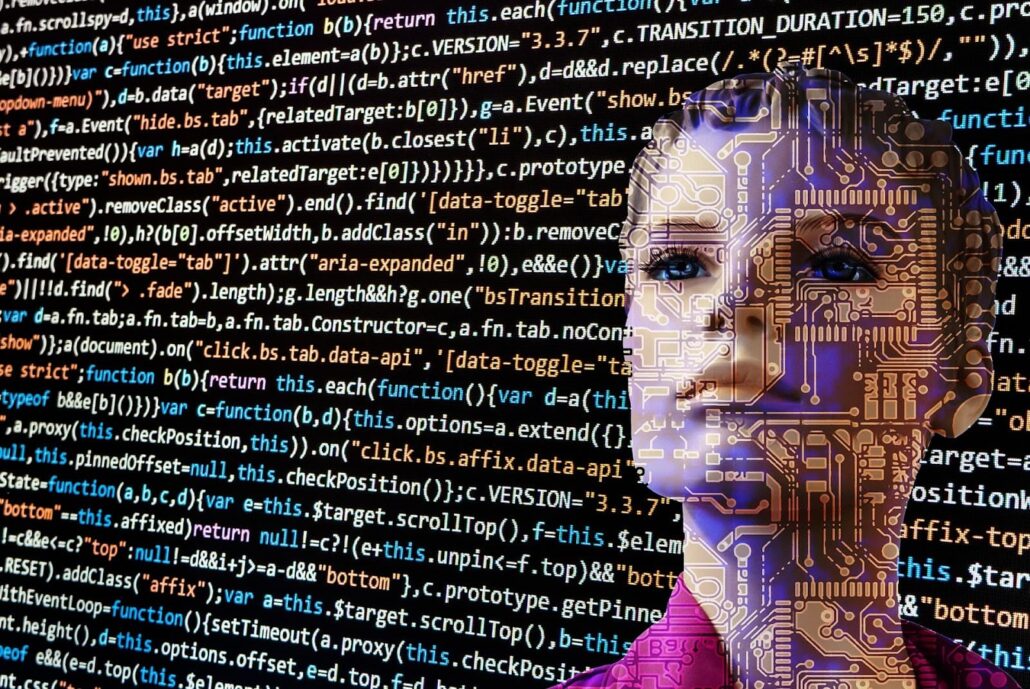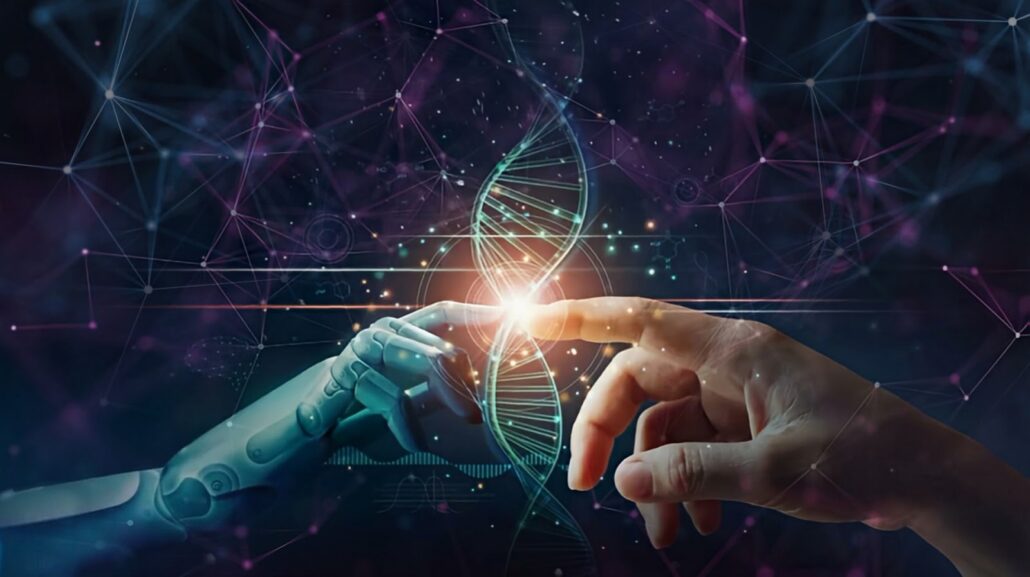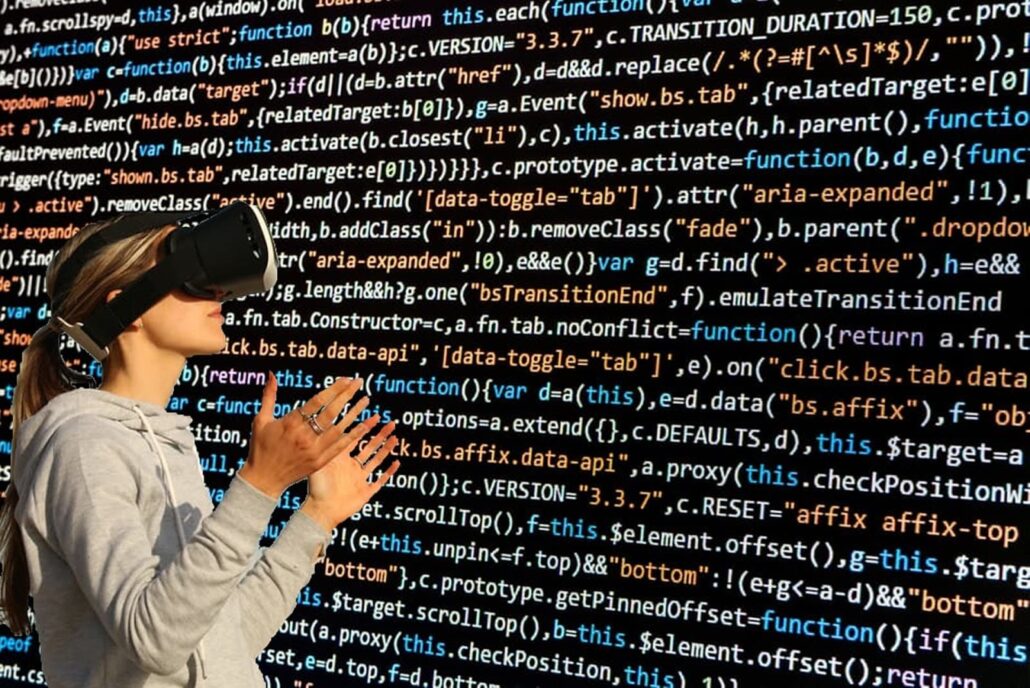Welcome to a world of endless possibilities, a world where advancements in Artificial Intelligence (AI) have transformed the way we live and work. From self-driving cars to intelligent personal assistants, AI’s impact on various industries is undeniable, revolutionizing how we approach tasks and processes that were once exclusively human domain.
In the realm of web development, there’s an ongoing debate: will AI completely replace web developers? The potential is certainly there. AI-powered tools are becoming increasingly sophisticated, capable of designing websites, optimizing user experience, and even troubleshooting technical issues. But while these developments are impressive, we’re not quite at the point of fully automated web development…yet.
In this blog post, we delve into the dynamics of AI in web development, exploring its capabilities, its current limitations, and what the future may hold. Stay with us as we navigate this fascinating intersection of technology and creativity.
Understanding AI in Web Development

To truly grasp the impact of AI on web development, it’s essential first to understand what AI is and how it operates. Artificial Intelligence, at its core, is a subset of computer science that aims to create systems capable of performing tasks that would normally require human intelligence. These tasks include learning from experience, interpreting complex data, understanding and responding to language, and making decisions.
Two subsets of AI that are particularly relevant to web development are Machine Learning (ML) and Natural Language Processing (NLP). ML involves algorithms that improve automatically through experience, allowing systems to learn from data without being explicitly programmed. This can significantly speed up the development process, as ML algorithms can be trained to automate repetitive coding tasks.
On the other hand, NLP is the technology used to aid computers to understand the human’s natural language. It’s the driving force behind chatbots and voice assistants, which are becoming increasingly common features on websites, offering instant customer service and providing a more interactive user experience.
The applications of AI in web development are vast and continually evolving. AI-powered design tools can now generate website layouts based on user preferences, greatly reducing the time spent on initial design stages. These tools can also analyze user behavior data to optimize website layouts for maximum engagement and conversion rates.
AI can also automate many testing and debugging processes. For instance, AI can scan a website for bugs or security vulnerabilities, report back on any issues found, and even suggest fixes. This not only speeds up the development process but also helps to ensure a higher level of accuracy and consistency compared to manual testing.
Current Capabilities of AI in Web Development
AI is already making a significant impact on the web development industry, with numerous tools and platforms leveraging its capabilities to streamline processes and enhance output quality.
AI Tools and Platforms in Web Development
Several AI-powered tools and platforms are currently available that aid various stages of web development. For instance, platforms like Wix ADI (Artificial Design Intelligence) and Bookmark use AI to create customized website designs based on user preferences. These tools can generate a fully functional site within minutes, significantly reducing the time spent on the initial design stage.
On the coding front, tools like Kite leverage Machine Learning to provide intelligent code completions, helping developers write code faster and with fewer errors. Similarly, DeepCode uses AI to review code and find potential issues, acting as an AI-powered ‘pair programmer.’
Tasks AI Can Perform in Web Development
AI has been trained to perform an array of tasks within the realm of web development. One of the most significant is code generation. AI algorithms can be trained to automate repetitive coding tasks, thereby increasing efficiency and reducing the likelihood of human error.
Design optimization is another area where AI shines. AI-powered design tools can analyze user behavior data to optimize website layouts for maximum engagement and conversion rates. This allows for a more personalized user experience, which can significantly improve website performance metrics.
AI also plays a crucial role in testing and debugging, as we mentioned before.
Challenges and Limitations
Despite the impressive capabilities of AI in web development, there are certain areas where it falls short, primarily due to the inherent limitations of current technology. Here are some key challenges and limitations that prevent AI from fully replacing web developers.
Lack of Creative Intuition and Human-Centric Understanding
One of the most significant limitations of AI is its lack of creative intuition. While AI can analyze data and make decisions based on predefined algorithms, it lacks the ability to think outside the box and come up with innovative solutions. This is especially crucial in web development, where creativity plays a key role in designing unique, engaging websites.
Moreover, AI lacks a human-centric understanding, which is essential for creating websites that resonate with users. For instance, understanding cultural nuances, emotions, and user motivations are areas where humans excel, but AI struggles.
Complex Decision-Making and Problem-Solving Abilities
Another limitation of AI is its inability to handle complex decision-making and problem-solving tasks that are common in web development. For example, when faced with a novel problem or an unexpected error, a human developer can draw on their experience and knowledge to devise a solution. In contrast, an AI system can only respond based on its programming and the data it has been trained on.
Difficulty in Understanding Nuances and Context Specific to Each Project
Every web development project is unique, with its own set of requirements, objectives, and constraints. Understanding these nuances and adapting to them requires a level of context-awareness that AI currently lacks. For instance, AI might struggle to understand why a particular design element is crucial for a specific client’s brand identity, or why certain features are essential for a particular user group.
The Human Touch: What Web Developers Bring
While AI continues to make strides in web development, there are certain aspects that it simply cannot replicate – the human touch. Here’s what web developers bring to the table that AI can’t match.
Creativity, Intuition, and User-Centric Design Thinking
Creativity and intuition are the heart and soul of web development. Developers often need to think outside the box to create engaging, unique designs that resonate with users. This creative process involves a deep understanding of user psychology, aesthetic sensibilities, and the latest design trends – something AI is yet to master.
Moreover, human developers excel at user-centric design thinking. They can empathize with users, understand their needs and frustrations, and design solutions that address these issues effectively. This human-centric approach is crucial in creating websites that offer an intuitive, satisfying user experience.
Adaptability and Problem-Solving Skills in Unique Project Scenarios
As we’ve already pointed out, every web development project is special, with its own set of challenges and requirements. Human developers can adapt to these unique scenarios, using their problem-solving skills and experience to overcome hurdles and deliver successful outcomes.
For instance, if a particular feature isn’t working as expected, developers can investigate the issue, identify the root cause, and implement a fix – a process that requires a level of critical thinking and adaptability that AI doesn’t possess.
Understanding of the Business Context and Effective Communication With Clients
Web development isn’t just about creating a functional, aesthetically pleasing website. It’s also about understanding the business context, aligning the website with the client’s brand identity, and meeting their business objectives.
This is where the value of web development consulting comes in. Human developers can communicate effectively with clients, understand their needs and expectations, and provide strategic advice to help them achieve their goals. They can explain complex technical concepts in layman’s terms, ensuring that clients are fully informed and involved in the development process.
Collaboration: AI and Web Developers Working Together

While AI has its limitations, it doesn’t mean that it’s not an incredibly valuable tool. By working together, AI tools and human developers can achieve a synergy that results in enhanced productivity and improved outcomes.
Synergy between AI Tools and Human Developers for Enhanced Productivity
AI tools can handle repetitive tasks, analyze large amounts of data, and perform tests at a speed and scale that humans simply cannot match. By automating these aspects of web development, AI frees up human developers to focus on complex problem-solving, strategic decision-making, and creative design work.
The result is a powerful synergy where AI and humans complement each other’s strengths: the speed, efficiency, and scalability of AI, combined with the creativity, intuition, and adaptability of human developers, can significantly enhance productivity and lead to better websites.
Examples of Successful Collaboration and Improved Outcomes
There are numerous examples of successful collaboration between AI and human developers. For instance, GitHub, a popular platform for software development, uses AI to suggest code completions to developers, speeding up the coding process and reducing the risk of errors.
In another example, web development firm Wix uses AI to automate the initial stages of website creation, such as selecting a suitable template and arranging basic layout elements. However, human developers then take over to customize the website according to the client’s specific needs, ensuring a unique, high-quality result.
These examples highlight how AI and human developers can work together effectively, leveraging their respective strengths to produce superior outcomes. It’s clear that the future of web development lies not in AI replacing humans, but in AI augmenting human capabilities, enabling developers to deliver more value and create better websites than ever before.
Looking Ahead: Future Prospects

As we look towards the future, it’s clear that AI will continue to play an increasingly prominent role in web development. However, the question remains: how might AI evolve to bridge the gap between its capabilities and human expertise?
Predictions for the Role of AI in Web Development in the Near Future
In the near future, we can expect AI to take on even more of the routine, repetitive tasks involved in web development. This includes aspects like coding, testing, and bug fixing, which can be automated to a large extent, freeing up human developers to focus on more complex, creative tasks.
AI will also become more integrated into the web design process. Tools like Adobe’s Sensei are already using AI to suggest design elements like color schemes and layouts, and this trend is likely to continue.
However, while AI will undoubtedly become more prevalent in web development, it’s unlikely to replace human developers entirely. The creativity, intuition, and critical thinking skills of human developers, as well as their ability to understand the unique needs of each client, are things that AI simply cannot replicate.
Potential Advancements That Could Bridge the Gap Between AI and Human Expertise
While AI currently lags behind humans in certain areas, advancements in technology could help bridge this gap. For instance, the development of more sophisticated AI algorithms could potentially enable AI tools to better mimic human creativity and intuition.
Moreover, advancements in natural language processing could improve AI’s ability to understand and interpret human language, making it easier for developers to communicate with AI tools and use them more effectively.
Ultimately, the goal should not be to replace human developers with AI, but rather to create a collaborative environment where AI tools and human developers work together to achieve superior outcomes.
As we move forward, the synergy between AI and human expertise will continue to shape the future of web development, opening up new possibilities and paving the way for a more efficient, innovative industry.
Conclusion
As we’ve explored in this post, AI has made significant strides in the realm of web development, offering tools that can automate routine tasks, analyze large amounts of data quickly and accurately, and even assist with design decisions.
However, it’s also clear that AI has its limits. It lacks the human touch – the creativity, intuition, and critical thinking skills that are so crucial to developing a unique, high-quality website.
Furthermore, while AI is excellent at following instructions and patterns, it struggles with tasks that require a deep understanding of context or subjective judgment. This is where human developers shine. They can understand the unique needs of each client, make strategic decisions, and inject creativity into their work in a way that AI simply cannot match.
Yet, the story doesn’t end here. AI is continually evolving, and future advancements could see it taking on a more prominent role in web development. However, it’s unlikely to replace human developers entirely. Instead, the future of web development lies in the synergy between AI and human expertise.

